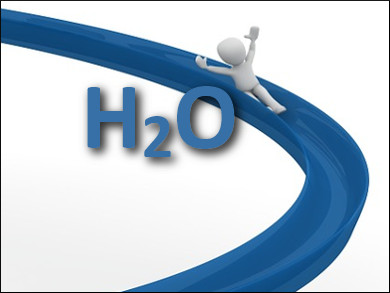The flow of a fluid within a nanochannel is highly dependent on the wettability of the channel itself. Nanochannels tend to have a low permeability which is attributed to the high adhesion forces at the interface. Thus, for many channels, a lubricant is needed to help facilitate the flow.
Tuan A. Ho, Sandia National Laboratories, Albuquerque, NM, USA, and colleagues have used molecular dynamics (MD) simulations to study the flow of water in a nanochannel with rough, hydrophilic surfaces. The simulations were performed on a water–kerogen system in the presence of, for example, N2, CH4, or supercritical CO2. Kerogen is a natural carbon material. The team found that supercritical carbon dioxide can be used as a “lubricating medium” to improve water flow in the nanochannel.
Supercritical CO2 has a limited solubility in water. The team found that through competitive adsorption, the supercritical CO2 spontaneously forms an atomically thin layer on the surface of the nanochannel. This layer changes the interface from a hydrophilic to a super-hydrophobic one, which helps to increase the throughput of water in the channel.
- Supercritical CO2-induced atomistic lubrication for water flow in a rough hydrophilic nanochannel,
Tuan A. Ho, Yifeng Wang, Anastasia Ilgen, Louise J. Criscenti, Craig M. Tenney,
Nanoscale 2018, 10, 19957–19963.
https://doi.org/10.1039/c8nr06204h




